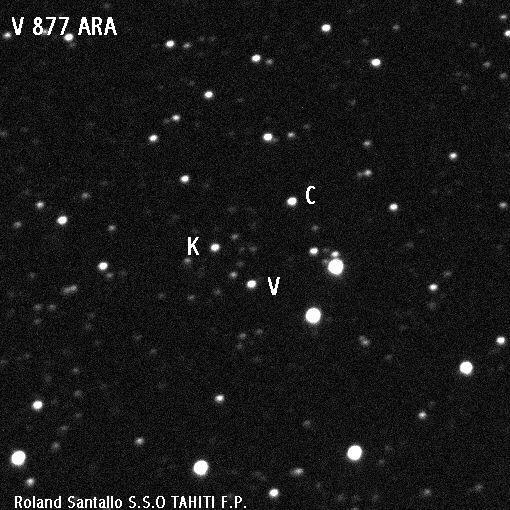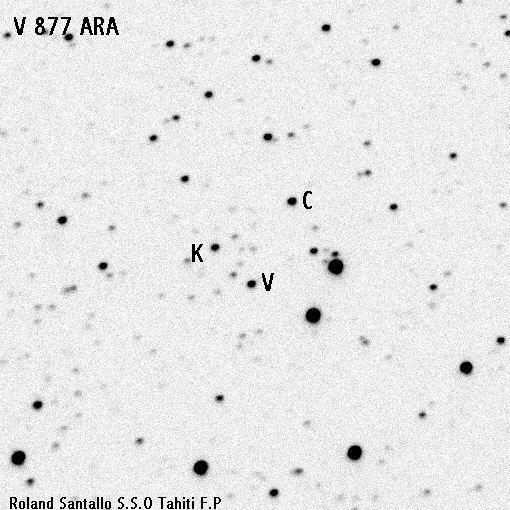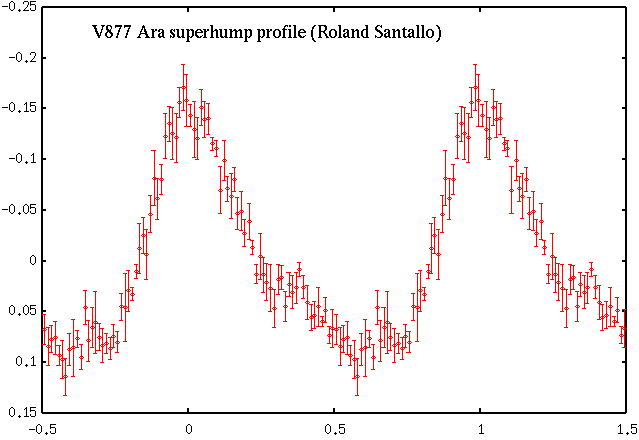
V 877 ARA
SU UMa-type dwarf novae.
2002-06-09 SSO Observations
V877 Ara: new SU UMa-type dwarf nova!
,
On 9 june Roland Santallo Southern Stars Observatory,
Tahiti French Polynesia
conduct time-series photometry of V877 Ara (NSV08383)
The data show fully developed superhumps (amplitude 0.25-0.30
mag),
establishing that V877 Ara is a new member of SU UMa-type dwarf
novae.
Although exact period determination is still difficult on
single-night
data, the system has a relatively long (around 0.08 d) superhump
period.
Observers are strongly urged to continue observation as long as
possible
(prefreably more than two superhump cycles per night) in order to
precisely
determine the superhump period.
!
*******
V877 Ara image and position
From Taichi Kato VSnet Team
.
This object seems to be correpond to
USNO0225.27372547 171653.966 -653251.46 (2000.0) 20.3 21.6
which is different from previous
identidications. More detailed
identification awaits Yamaoka-san's astrometry (Vsnet Team). The
quiescent counterpart
seems to be much fainter than was previously thought. This
is consistent
with the superhump detection.
Anyway, observers should refer to the above
image before observing,
since the position has a large offset from the GCVS/NSV/Downes
catalogs.
Further obseravtions are very strongly requested!


S.S.O Light Curve
Run TIME SERIE 2002-06-09

The Superhumps are Full developed
Light curve from Vsnet on S.S.O Images

Comments from Taichi Kato VSnet team
Roland Santallo (Southern Stars Observatory, Tahiti French Polynesia) just reported time-series photometry of V877 Ara (NSV08383) taken on June 9. The data show fully developed superhumps (amplitude 0.25-0.30 mag), establishing that V877 Ara is a new member of SU UMa-type dwarf novae. Although exact period determination is still difficult on single-night data, the system has a relatively long (around 0.08 d) superhump period. Observers are strongly urged to continue observation as long as possible (prefreably more than two superhump cycles per night) in order to precisely determine the superhump period.
Congratulations to Roland Santallo on this breath-taking success!